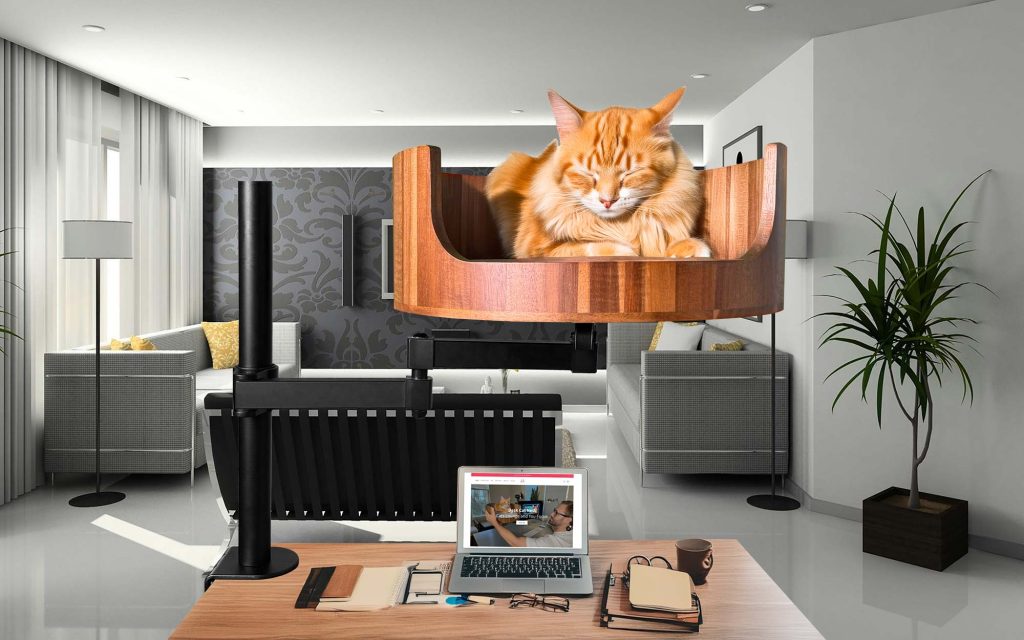Have you ever wondered what your cat’s wagging tail means? Cats communicate through various signals, and their tail movements are one of the key ways they express their emotions and intentions. Understanding what your feline friend is trying to convey can help strengthen your bond and improve your communication with them. In this article, we will delve into the meaning behind a cat wagging its tail, decoding the different signals that your pet may be sending you.
From playful swishing to aggressive flicking, a cat’s tail can provide valuable insights into their current mood and feelings. By learning to interpret these subtle cues, you can better understand when your cat is feeling happy, relaxed, anxious, or even irritated. We will explore the various tail movements and their corresponding meanings, offering practical tips on how to respond appropriately to your cat’s signals. By gaining a deeper understanding of your cat’s body language, you can foster a stronger connection with your furry companion and ensure a harmonious and fulfilling relationship.
1. A cat wagging its tail does not always indicate happiness; it can also be a sign of agitation or aggression.
2. The speed and direction of the tail wagging can provide clues to a cat’s current emotional state.
3. Understanding feline body language, including tail signals, can help prevent misunderstandings and improve communication with your cat.
4. Cats use their tails as a way to communicate with other animals and humans, so paying attention to this behavior is crucial for cat owners.
5. By observing and interpreting your cat’s tail movements, you can better respond to their needs and ensure a positive interaction.
Why do Cats Wag Their Tails?
Cats use their tails as a form of communication, and tail wagging can signify a variety of different emotions or intentions. While dogs typically wag their tails to show excitement or happiness, the meaning behind a cat’s tail wagging is quite different. Cats may wag their tails when they are feeling agitated, annoyed, or even fearful. It’s important to pay attention to the speed and position of the tail wagging to determine what your feline friend is trying to convey.
Interpreting Different Types of Tail Wagging
Not all tail wagging is created equal when it comes to cats. A slow and deliberate wagging of the tail can indicate that a cat is feeling relaxed or content. On the other hand, a fast and aggressive tail wagging motion could suggest that a cat is feeling threatened or defensive. Cats may also exhibit a twitching motion in their tail when they are intensely focused or hunting prey. By observing the nuances of your cat’s tail movements, you can gain insight into their current emotional state.
Common Misconceptions About Cat Tail Wagging
One common misconception is that all tail wagging in cats is a sign of aggression. While it’s true that aggressive cats may wag their tails, this behavior can also be seen in other contexts. For example, a cat may wag its tail in excitement when chasing a toy or engaging in play. It’s important to consider the overall body language of the cat in conjunction with the tail wagging to accurately interpret their feelings.
How to Respond to Cat Tail Wagging
When your cat wags its tail, it’s essential to approach the situation with caution and sensitivity. If your cat is showing signs of agitation or fear, it’s best to give them space and avoid further provocation. On the other hand, if your cat is wagging its tail in a relaxed manner, you can continue interacting with them calmly and gently. By understanding the meaning behind your cat’s tail wagging, you can better respond to their needs and communicate effectively with your feline companion.
Frequently Asked Questions
What does it mean when a cat wags its tail?
Cat wagging tail can indicate a range of emotions or intentions, depending on the context. Tail wagging can signal excitement, agitation, fear, playfulness, or even aggression. It’s important to observe other body language cues to better understand what your cat is trying to communicate.
Is the Desk Cat Nest a suitable solution for understanding cat tail wagging?
While the Desk Cat Nest can provide a cozy spot for your cat to relax and observe its surroundings, it is not specifically designed to help interpret cat tail wagging behavior. To better understand what your cat’s tail movements mean, consider consulting with a veterinarian or animal behaviorist.
How can I determine if my cat’s tail wagging is a sign of distress?
If your cat’s tail wagging is accompanied by flattened ears, dilated pupils, hissing, growling, or other signs of aggression, it may indicate distress or discomfort. In such cases, it’s important to give your cat space and avoid further stressors until the situation has de-escalated.
Can the Desk Cat Nest help reduce stress-related tail wagging in cats?
While the Desk Cat Nest can provide a comfortable and secure environment for your cat, it may not directly address stress-related tail wagging behavior. To help reduce stress in your cat, consider providing enrichment activities, interactive toys, and a consistent routine to promote a sense of security and well-being.
In conclusion, investing in a Desk Cat Bed can greatly help with understanding your cat’s wagging tail meaning. By providing a comfortable and secure space for your cat to relax and unwind, the Desk Cat Bed can reduce stress and anxiety, ultimately leading to less frequent tail wagging as a result of nervousness or discomfort. The elevated design of the Desk Cat Bed also allows your cat to observe their surroundings easily, promoting a sense of security and confidence. Overall, choosing a Desk Cat Bed is a valuable choice for both you and your furry friend, as it provides a cozy retreat for your cat while helping you better interpret their body language for a harmonious relationship.


